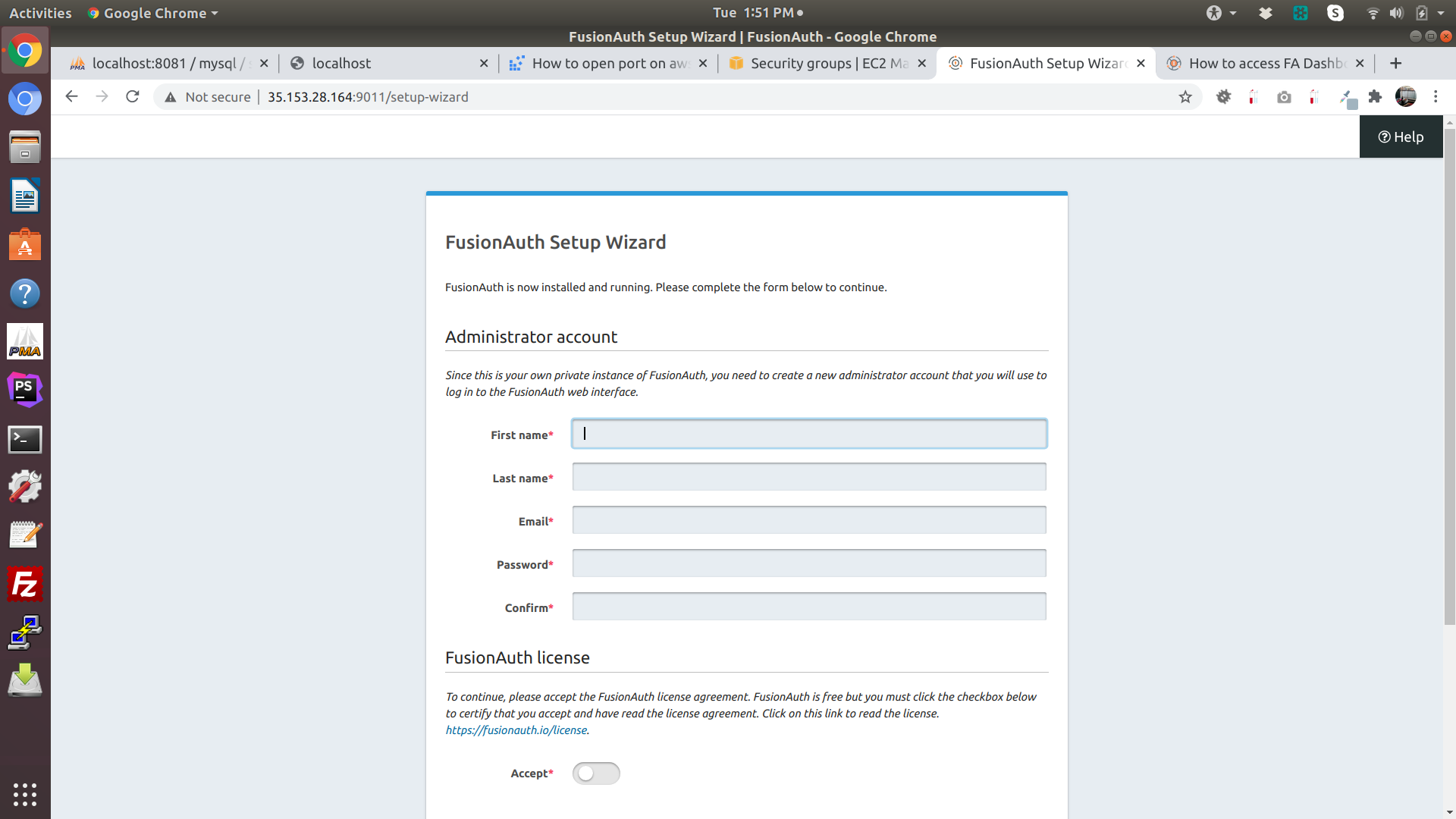How to access FA Dashboard on a remote server?
-
On my local FA install I type localhost:9011 and I am able to login to the FA Dashboard. I recently put up a server on AWS that includes FA in the Docker container it is at 35.67.23.x. I thought i could bring up the FA Dashboard by typing 35.67.23.x:9011, but that doesn't work.
What do I need to do to be able to log into the AWS FA Dashboard?
-
Hi @richb201 ,
If you are using AWS, you need to make sure you have opened up port 9011 in the security group. Here's some AWS documentation about that.
You probably want a load balancer (nginx or an ALB) in front of your FusionAuth instance to be able to control traffic if needed. This would let you, for example, send different requests based on domain name to different tenants.
(Another option, of course, is purchasing FusionAuth Cloud and letting us run your prod server.
 )
) -
@dan Yes, a production server setup would be great. At this point the product will be freemimum so the finances are a little tight :). The problem with a load balancer is that a user must login into the same copy of FA every time. But this won't be possible if a load balancer is deciding which instance to send a user to. Unless I should use RDS as the FA database? Has anyone done this successfully?
This would let you, for example, send different requests based on domain name to different tenants.
-
I managed to open the port 9011 and am now seeing this screen.

I was hoping that that configuration that I did on my laptop that get sent up to EC2 from Github would arrive intact. Do I need to re setup FA on the server? Is there a manual way to bring over the entire setup from my laptop? How?
-
I just found this answer. I will try it out.
https://fusionauth.io/community/forum/topic/721/hosting-on-rds/2?_=1611712258096
-
Awesome!
But this won't be possible if a load balancer is deciding which instance to send a user to. Unless I should use RDS as the FA database? Has anyone done this successfully?
You could run the database locally on an ec2 instance and have both FusionAuth instances connect, but in general you'll be better served having the database on a different server. https://fusionauth.io/docs/v1/tech/installation-guide/server-layout/ walks through some scenarios.
-
@dan said in How to access FA Dashboard on a remote server?:
Hi @richb201 ,
If you are using AWS, you need to make sure you have opened up port 9011 in the security group. Here's some AWS documentation about that.
You probably want a load balancer (nginx or an ALB) in front of your FusionAuth instance to be able to control traffic if needed. This would let you, for example, send different requests based on domain name to different tenants.
(Another option, of course, is purchasing FusionAuth Cloud and letting us run your prod server.
 )
)Dan, I got the FA connected to a RDS mySQL and I seems to be able to get in with URL:9011. My first question is a) when I setup the dashboard on server A. Can I assume that all the servers (behind a load balancer) will get the same configuration? b) I want to make sure that FA is using the RDS database and not a local one in each docker container. How can I prove to myself that FA is using the RDS?
-
My first question is a) when I setup the dashboard on server A. Can I assume that all the servers (behind a load balancer) will get the same configuration?
You need to distribute the configuration file or the environment variables yourself. You could scp the configuration file to each server, for example.
b) I want to make sure that FA is using the RDS database and not a local one in each docker container. How can I prove to myself that FA is using the RDS?
I'm not sure how you installed this, but you could remove postgresql from the docker-compose file. You can also shut down the RDS instance and see if FusionAuth fails.
You can also look for a line in the startup log file that looks like this:
fusionauth_1 | 2021-02-02 9:23:53.070 PM INFO com.inversoft.jdbc.hikari.DataSourceProvider - Connecting to PostgreSQL database at [jdbc:postgresql://db:5432/fusionauth]This line is connecting to a local postgresql database, but you should see the configuration value pointing to the RDS hostname in yours.